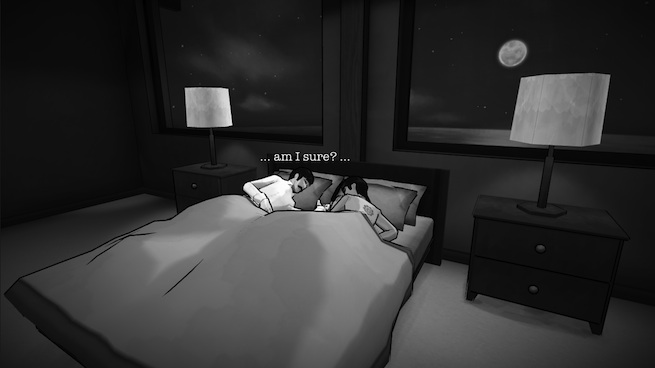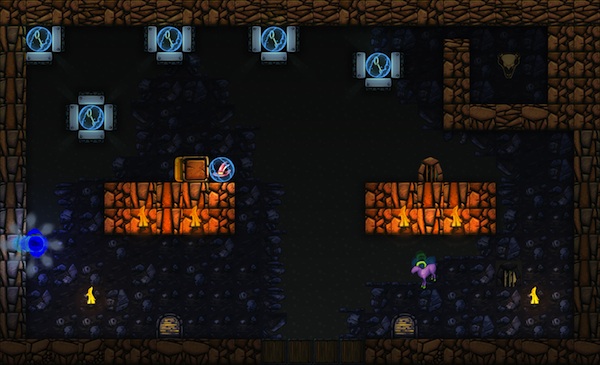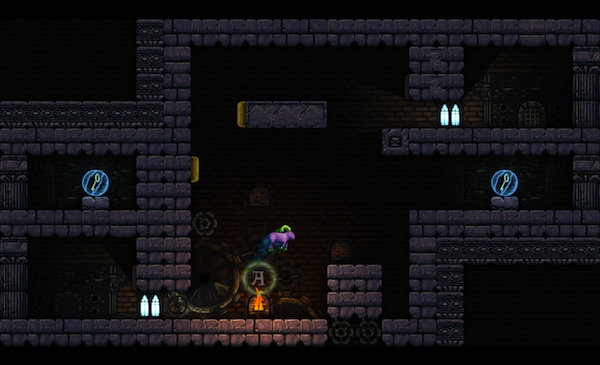Ian Stocker, MagicalTimeBean
Why he left
For nearly a decade, Ian Stocker was a self-employed musician doing contract work for games: composing soundtracks, sound design, and audio direction for his clients. Aside from taking a few piano lessons, he doesn’t have any formal music training — he just started making music with computers when he was a teenager.
Though he contributed to a bunch of indie projects early on (none of which came out), one game in particular helped get his career off the ground. He made 30 songs for a Game Boy Color role-playing game called Mythri, which was close to being done before development fell apart. A programmer on that game went on to work for Amaze Entertainment, and he used Mythri (complete with Stocker’s music) as his portfolio. Amaze was looking for someone who specialized in handheld console development, so an executive producer reached out to Stocker, and that kicked off his contract work and the start of his one-man company, Ian Stocker Soundesign.
While he loved what he did, Stocker just couldn’t pass up the chance to make his own games when the opportunity arose in 2009.
“A couple of projects I was supposed to get started on actually got canceled,” he said. “So I had set aside several months to work on these, and suddenly I had a vacuum that I needed to fill. So I just went to the coffee shop and started to learn XNA and started a new game project. Five months later, I finished my first game and launched it on Xbox Live Indie Games. That was [the action RPG] Soulcaster.”
Now working under the name MagicalTimeBean, Stocker made two more games: Soulcaster 2 and Escape Goat (a puzzle platformer).
“I think I learned a lot doing the contracting thing,” Stocker said. “That’s part of why I set out to make my own games: I started to develop opinions on game production, watching a bunch of games being made from start to finish, seeing what stuff worked and what stuff didn’t work in my opinion. That kind of gave me a jumping off point for how to develop games on my own. So I definitely think it was a huge advantage for me to have witnessed these 30 or 40 game projects as an outsider and then go in and try my hand at it.”
MagicalTimeBean’s newest game: Escape Goat 2
Stocker’s decision to work on an Escape Goat sequel was partly due to the old-school appeal of the first Escape Goat, which looks like it came from the Nintendo Entertainment System era. Stocker brings up the game’s aesthetic as proof that maybe it was too old-fashioned for some players, as he still hasn’t been able to get it on Steam (Valve’s popular digital platform on PC) via the Greenlight community program. So instead, he set out to make Escape Goat 2.
“What if I took the same game concept, made a new game, had HD graphics for it, and try it again?” Stocker said. “Because Escape Goat had a really good critical and fan reception, and I felt like there was a little bit momentum I could spring off of from the first game, rather than let that die out over a year or something and try and resurrect it later.”
In Escape Goat 2, you have to solve a series of clever puzzle rooms (100 in all) by using the goat’s abilities and the powers of his magical rodent companion. Navigating the mechanical platforms, fire balls, and the other challenges the game throws at you takes some time getting used to, but you’ll feel that much smarter once you figure out Escape Goat 2’s internal logic.
It’s set for release on PC this summer.
Unexpected challenges
In addition to the abrupt change in the frequency and size of his paychecks — Stocker hopes to reach “a similar amount” to what he was making as a contractor in the next couple of years — he found it challenging to promote and market his games, something that he never had to do before.
“I didn’t realize how much work you need to put into promotion of your stuff,” Stocker said. “Like making a quality game is an important part of the equation, but it’s one of like five things. Just the amount of time spent on the website, Twitter, media stuff, interviews like this one — it all helps tremendously. I didn’t know that going in because I was used to just dealing with customers who came to me through word-of-mouth. I didn’t have to do a ton of sales-pitch-type stuff. So that was a huge learning curve.”
On the rise of indie developers
“That seems to be happening all the time — a lot of people are leaving their triple-A jobs either of their own volition or, in less fortunate cases, not — and starting their indie company or trying to get a new team,” Stocker said. “Because the cost to distribute is so low and there’s so many different ways to distribute your game now, you don’t necessarily need a publishing contract. You don’t need an expensive dev kit in some cases; even console [manufacturers] are willing to work with you a bit more.”
VentureBeat's mission is to be a digital town square for technical decision-makers to gain knowledge about transformative enterprise technology and transact. Learn More




